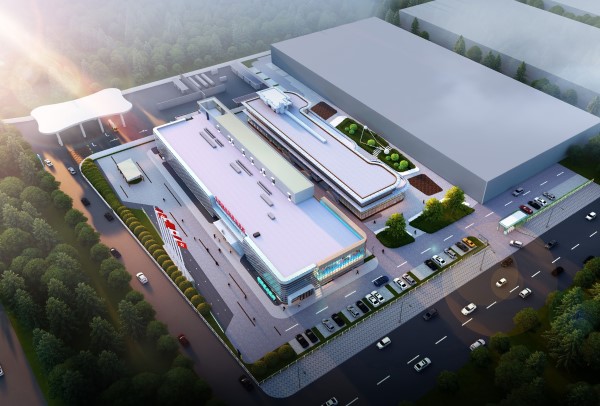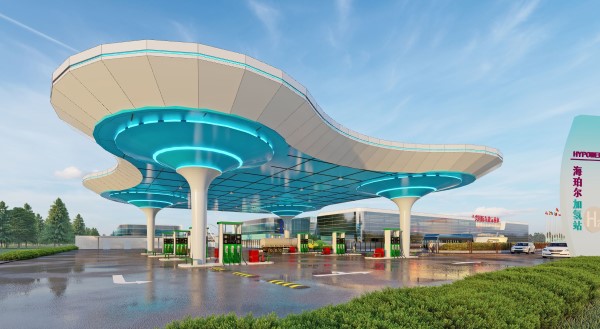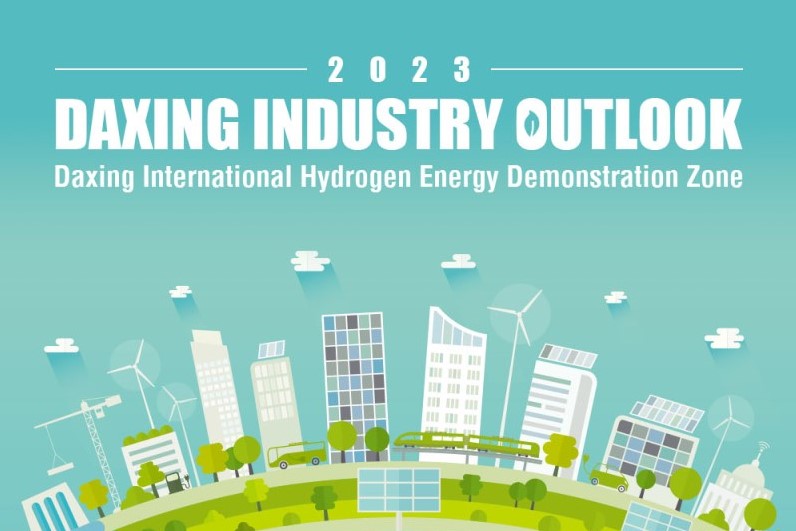Sino-Japanese industrial park launched in Daxing

Design sketch aerial view of the hydrogen energy demonstration zone in Beijing’s Daxing district. [Photo provided by Daxing district]

Design sketch of the exhibition hall in the hydrogen energy demonstration zone in Beijing’s Daxing district. [Photo provided by Daxing district]

Design sketch of the hydrogen fueling station in the hydrogen energy demonstration zone in Beijing’s Daxing district. [Photo provided by Daxing district]
A press conference of Sino-Japanese cooperation on hydrogen energy development was held in Beijing’s Daxing district on August 8, attracting about 100 guests from home and abroad.
At the meeting, the National Development and Reform Commission (NDRC) and the capital government formally proposed to build a Sino-Japanese Cooperation Industrial Park in Daxing, and then went on to unveil the Daxing International Hydrogen Energy Demonstration Zone.
Gao Niandong, Deputy Head of the district, introduced the construction background, overall design and building schedule of the collaborative industrial park. Meanwhile, Zhu Dequan, deputy dean of an industrial research institute of Tsinghua University, briefed the attendants on the general condition, progress and future plans of the demonstration zone.
Three Key Parts of the Industrial Park
Positioned for international collaborative innovation and industrial cooperation, the park is planned in a spatial structure of “one belt, two axes, three cores and multiple clusters” focused on the innovation industry, life services, and information release.
With the support of the municipal Party committee and government, the district seized the opportunity brought by the project, taking advantage of Japan’s world-leading hydrogen energy industry and Daxing’s space resources to create a global pioneer zone of innovation-driven development.
The park will be a major location for high-end industry and a leading zone for industry-city integration with jobs and housing in balance to benefit bilateral talents and high-quality industries.
At the same time, a counterpart industrial park will be built in Tokyo, giving full play to the advantages of the sister cities of Beijing and Tokyo and promoting the flow of technology, funds and programs to create an open and transparent investment and business environment.
It will be included in the second batch of “China-Japan development cooperation demonstration zones at the sub-national level” issued by the NDRC and a key project of Beijing’s “14th Five-Year Plan (2021-25)”.
40 High-end Programs Introduced Despite Epidemic
The project leader emphasized that the district achieved results through new models of investment promotion online in spite of the impact of the novel coronavirus (COVID-19).
Daxing has carried out operation and development with the Japanese consortiums ITOCHU and ORIX, signed district-based contracts with seven companies including Ricoh Group and Dafeng Metal, and reached industry park-based agreements with SNK, a Japanese-listed company, Monarch Science and technology, and Zhenglin International, a well-known intellectual property protection organization.
The spokesman also noted the establishment of an innovation development fund, with an initial scale of two billion yuan ($286,373), which is supported by municipal funds. As of now, Daxing has attracted cooperation with more than 40 high-end programs worldwide.
Overall Transformation Completed by June
In the next step, the construction of the demonstration station and experience exhibition halls will be completed by this year’s end, and the overall transformation of the industrial park will be finished by June of next year.
The first phase of the project anticipates a demonstration station with the world’s largest daily hydrogen refueling capacity of 3.6 tons per day.
Meanwhile, original plants have been transformed into a science and technology experience exhibition hall that displays social and development history as well as achievements and corporate products.
At the same time, the project will cooperate with Tsinghua's industrial research institute and China Hydrogen Energy Engineering Center (Key Laboratory) to build an innovation center.
With the help of application scenarios such as Beijing Daxing International Airport and JD’s “Asia No 1” logistics base, the district will explore the application of hydrogen fuel cell vehicles in public service sectors such as transportation and sanitation.
Hydrogen energy is one of the high-end technological industries developed by Tsinghua's industrial research institute, relying on Tsinghua University’s scientific research resources and global network.
After more than 10 years of research, product development, and industry cultivation, the institute has formed a preliminary layout of the entire hydrogen energy industry chain.

